by digilearn | Dec 5, 2014 | General
The metaphorical truck of Educational Technology careered into Falmouth University’s, Exchange Building today; with Damien, Mark and Oliver in the front seat presenting staff with tea, cakes, festive cheer and the opportunity to find out more about the state of the art within Educational Technology and what lies ahead.

Some really interesting and engaging discussions arose around collaboration, social media, the Internet of Things, video instruction, this years Horizon Report and some of the Projects that the team have been involved in over the past year. We dug out the Apple TV and discussed new ways that Apple supports presentation in the teaching environment and dotted about some post-it notes to find out how staff are making use of technology and what get’s in the way of the day to day.

We also took the opportunity to gauge opinion on the formation of a discussion group to share some of the apps we use on our phones and tablets and it’s an overall positive response, so watch this space for an announcement in the new year as to where and when!
Thanks to all who took the time to attend and we look forward to working with you on some of the exciting projects that come out of these events.
by digilearn | Dec 5, 2014 | General
Though I would advocate face to face meeting in physical space to help form supportive Communities Of Practice (Lave & Wenger), I’ve been thinking about how these communities can easily move in and out of online/virtual space and that through development of technology there seems to be less and less distinction between the two. I communicate with colleagues across the globe in the same virtual space as I do with the person on the opposite desk and I use similar tools in personal and professional space. On the back of these thoughts, I thought I would post up a few emerging platforms that facilitate continuing the discussion and would be appropriate tools to apply to the SAMR model of technology adoption in learning and teaching.
Known/Idkno – The Blog

Known’s strength lies in simplicity. Much like Tumblr, it allows a few types of post and a mixture of the short and medium blog format, which is why i’m adopting it to use for my research journal. It also allows you to roll out your own social network if you have some server space and allows you to comment inline on posts, which adds a nice social element to the content.
Medium – The Curator
Medium
Everyone’s stories and ideas
Medium comes from the Twitter stable and it’s fastly becoming the go to source of evolved ideas that might have started in 140 characters. A bit like the written version of a TED talk, Medium promotes the sharing of ideas and encourages responses from readers in the form of inline comments or their own stories.
Slack – The Team Communication Tool

Within teams, people will have different preferences about which tools they like to use for particular communications, this may be based on how they choose to communicate outside the work environment. Slack provides an easy way to integrate many communication tools such as Skype/Hangouts/Twitter in one interface so that colleagues can choose to connect in the way that is most familiar or convenient to them. Slack is currently taking enterprise communications by storm and ET are working with courses at Falmouth to look at how this tool may enable communication outside of the physical classroom.
Sublevel – The micro blog

Sublevel is a great example of browser led design, so doesn’t come packaged as an app for Android/IOS but works responsively across platforms in any modern browser. It makes use of web standards and is reminiscent of Twitter early on, with the added advantages of inline commenting and no character limit. Despite having no character limitations, like most modern messaging apps it feels conversation like, so you end up self-limiting posts. The community isn’t huge yet, but if you are interested in exploring it more, converse with me http://sublevel.net/the_markness/
by digilearn | Dec 1, 2014 | General
What is the project about?
In partnership with Falmouth’s BA
(Hons) Music, Theatre and Entertainment Management course, we are
piloting open source online communication tools to support students in
cross institutional communication and collaboration.
Why are we undertaking it?
Falmouth
University offers an increasingly diverse portfolio of academic
disciplines across two main campuses with a variety of teaching and
learning spaces. The ET team often receive requests about supporting
collaborative projects across departments, so as a means to promote clear
and transparent communication amongst students, Educational Technology
propose to implement a pilot study over a year period that address the
desire to improve collaborative practice.
Who’s involved?
Dwayne Roberts, MTEM student
Mark Williams, Learning Technologist
What will the project achieve?
An
online platform that students can use to identify and promote and
exchange skill and start to form projects by identifying timeframe and
available dates.
When is the project taking place?
May 2015- MAY 2016 with recommendations for implementation in March 2016
Where can I find out more?
by Amy Sampson | Nov 25, 2014 | General
Last Thursday saw Mark, Steph and myself don our finest and head out to the annual Staff Excellence Awards. We were fortunate enough to have been shortlisted for the Exceptional Contribution to the Student Experience award.
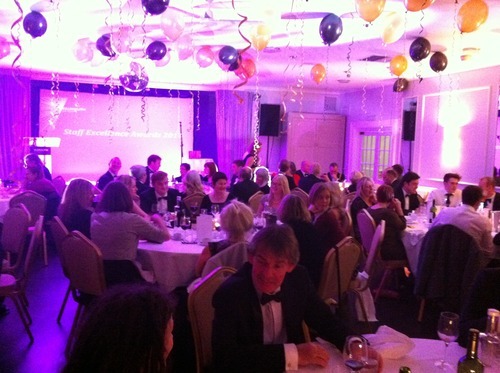
As a team we are really proud to be nominated for this award. Student experience is at the heart of what we do and so to be recognised in this area is a real achievement for us.
The event was a great opportunity to meet others at the University who had been nominated in additional categories such as Rising Star, Outstanding Contribution to Research and Innovation and Service Excellence.
With the DIME core team being nominated for the International Collaboration of the Year award it meant that Damien found himself in two categories on the night.
Each shortlisted entry was accompanied by a short video outlining the nominated team, individual or project. It was really great to hear so many testimonials from staff at the University passionate about the shortlisted entrants.
Judging finished earlier on in the evening and Rosie Sellwood picked up the Exceptional Contribution to the Student Experience award. Well done Rosie!
Congratulations also to the DIME Team (including ET’s Damien Hogan) for winning the International Collaboration of the Year Award.
It was a great evening and one we hope is repeated year after year!
by digilearn | Oct 1, 2014 | General
Students using the Learning Space now have additional access to essential course information. This area is personal to each student, providing a welcome message, personal tutor details and important course documents. It is a minor change that adds a second tab on the front page of the Learning Space. It allows us to provide consistent, useful information up front to students.
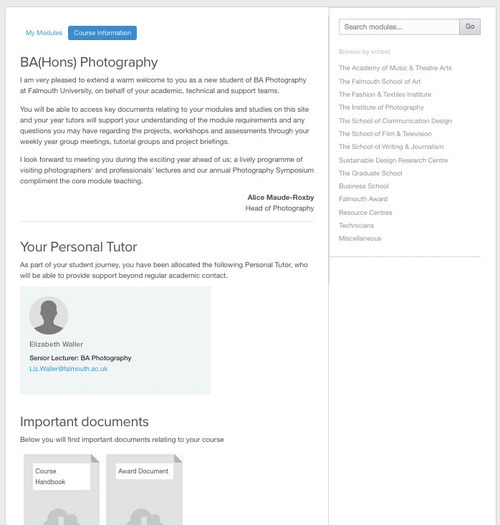
Please get in touch if you have any feedback or questions regarding this update.
by Amy Sampson | Sep 24, 2014 | General
The EdMedia World conference on Educational Media and Technology is an annual event hosted by the AACE (Association for the Advancement of Computing in Education). This years conference had delegates for 61 countries in attendance.

As part of the conference Educational Technology at Falmouth University in collaboration with Jarno Tolonen from Education Technology Services at Tampere University of Applied Sciences, Finland, had a submitted paper accepted for presentation. The paper addressed the theme “New roles of the instructor and learner” and is titled: “Empowering the Learning Event: New Roles for Learning and Teaching”.
The conference this year was held at University of Tampere, Finland between 23rd – 26th June, themes for EdMedia centred on seven major topics:
- Infrastructure
- Tools & Content-Oriented Applications
- New Roles of the Instructor & Learner
- Human-Computer Interaction (HCI/CHI)
- Cases & Projects
- Universal Web Accessibility
- Indigenous Peoples & Technology
A different keynote started each days proceedings followed by a discussion session should delegates wish to debate issues from the morning session further with speakers.
Professor Jill Jameson from Greenwich University started the conference with a keynote titled: Why we Need Distributed, Transformational e-Leadership and Trust in the Fifth Age of Educational Media and Technology. Some of the principles of educational e-leadership and technology Jameson has previously discussed in her article “e-Leadership in higher education: The fifth “age” of educational technology research” which featured in the October 2013 edition of British Journal of Educational Technology. This would be a good starting resource to reference should themes from the keynote prove of interest.
The importance of trust within an educational environment was particularly stressed as part of this presentation; it underlies the educational system – “Without trust we cannot stand” (Confucius). Jill recognised that there are many struggles currently being experienced in management as many advances are infrastructure led. Marketisation of the web has led to some resistance (overt or not) and a values based approach to e-leadership in education was recommended as part of the presentation; “To lead the people walk beside them” – Lao Tzu.
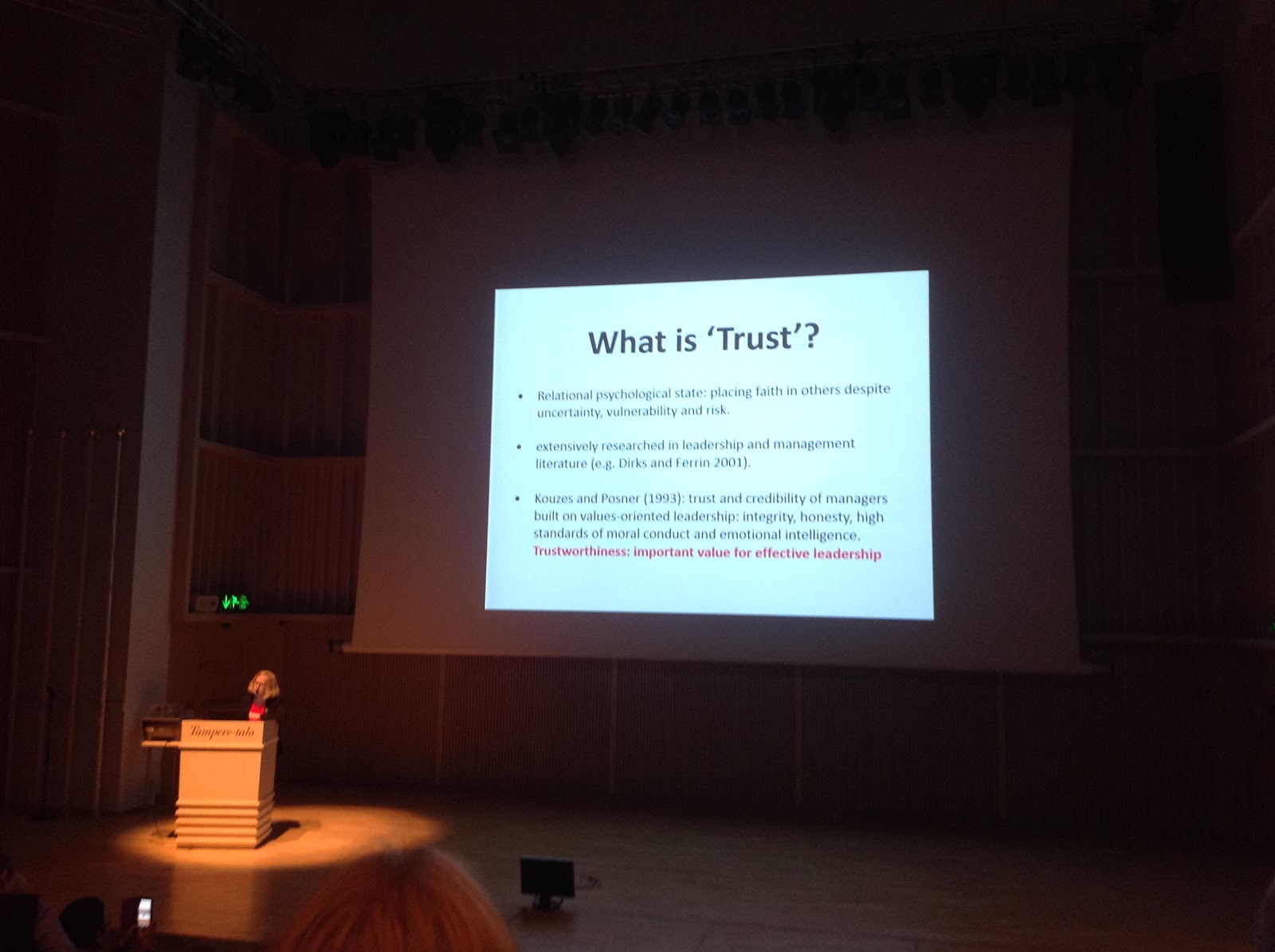
Many of the themes from this first keynote resonated with the presentation we were to deliver at the conference in the week. The importance of reevaluating roles and how to share practice within education were particular threads discussed in the subsequent discussion session which followed the keynote. E-leadership was one particular area where delegates were keen to share experiences in their institutions; innovations were portrayed potentially disruptive and chaotic when not managed effectively, a point which resonated with those in the room. Interestingly representatives from Singapore Universities highlighted that they work personally with the minister for education to develop educational strategies used in the country, one such benefit of having a smaller population.
The conference itself had representation from Finland’s Ministry of Education; senior minister Jouni Kangasniemi was an invited speaker for an afternoon session titled “Education in the Digitalizing World – Challenges and Opportunities as Seen from the Finnish Perspective”. The Finnish educational system has long been regarded as an exemplar model which places particular emphasis on the student experience (Sahlberg, 2007). I found this session especially relevant as it gave an opportunity to discuss common digital themes and issues from different institutional perspectives.
As part of the session Jouni introduced the Opeka website which uses a questionnaire system for teachers to survey their use of IT and technology in teaching. The results of which are then collated for other educational establishments to view and analyze. As a method for collecting information across schools its a great initiative and gives a feel for digital competence levels in staff. This process allows for more evidence based development opportunities, something the Finnish education system supports.
As part of this session there was much talk of assessment methods and the possibilities of fully digital submissions. The potential for assessment and technology was the theme in a keynote titled; “Learning Analytics: Welcome to the Future of Assessment” delivered by Simon Buckingham Shum. This session was a deep exploration into learning analytics; a phrase I’ve often heard bounded around to improve student assessment. Simon’s keynote critically explored analytics, while exploring how software is shaping education. He stated, “Integrity and trust is what all technology is built on“, the same values should be placed on the way in which we interpret and analyze information derived from these sources. Classification systems, types of analytics and the potential for analytics to shape education were all discussed as part of the keynote. The challenge of changing organisational and academic cultures to take into consideration these issues is of particular relevance when teaching and learning utilises student data. As part of his talk Simon referenced the blog http://learningemergence.net/; a joint collaboration between the Open University, University of Bristol and Incept Labs, it pays particular attention to emergent learning trends, specifically technological advances in learning and teaching and is well worth a visit.
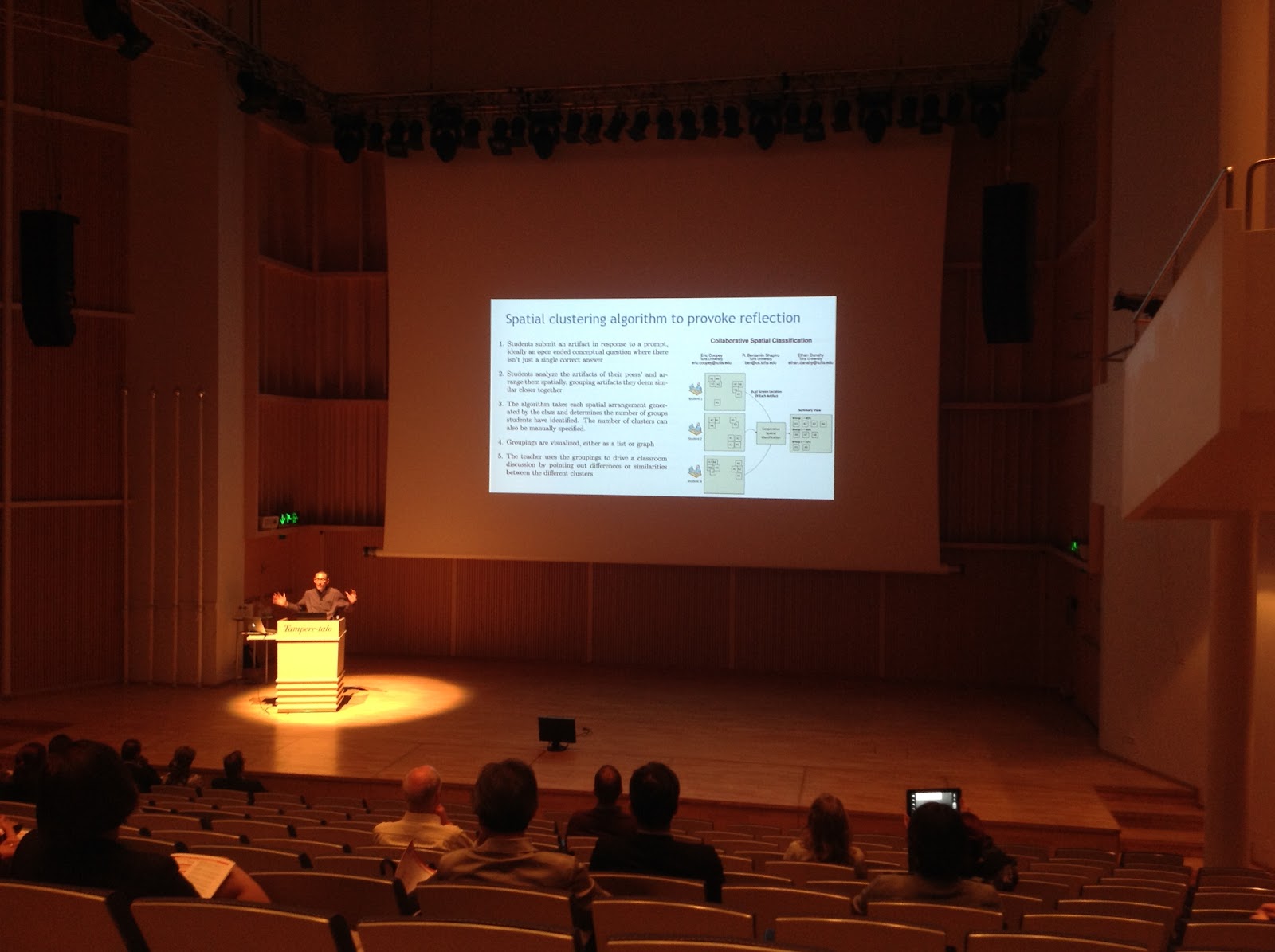
After Simon’s talk I went to a session which focused purely on learning spaces, something Finland in particular seem to have mastered. Spaces at Finnish Universities seem really in tune with what students want, and are majorly successful as a result. This session was delivered in the Oasis; an adaptable and inviting learning environment at Tampere University. Tiered seating, books, board games and bean bags littered the room, furniture was free to move meaning the resulting space could be configured to suit multiple teaching styles. It got me to thinking about the spaces we have within our University and whether these areas are flexible enough and suit the needs of our creative students.
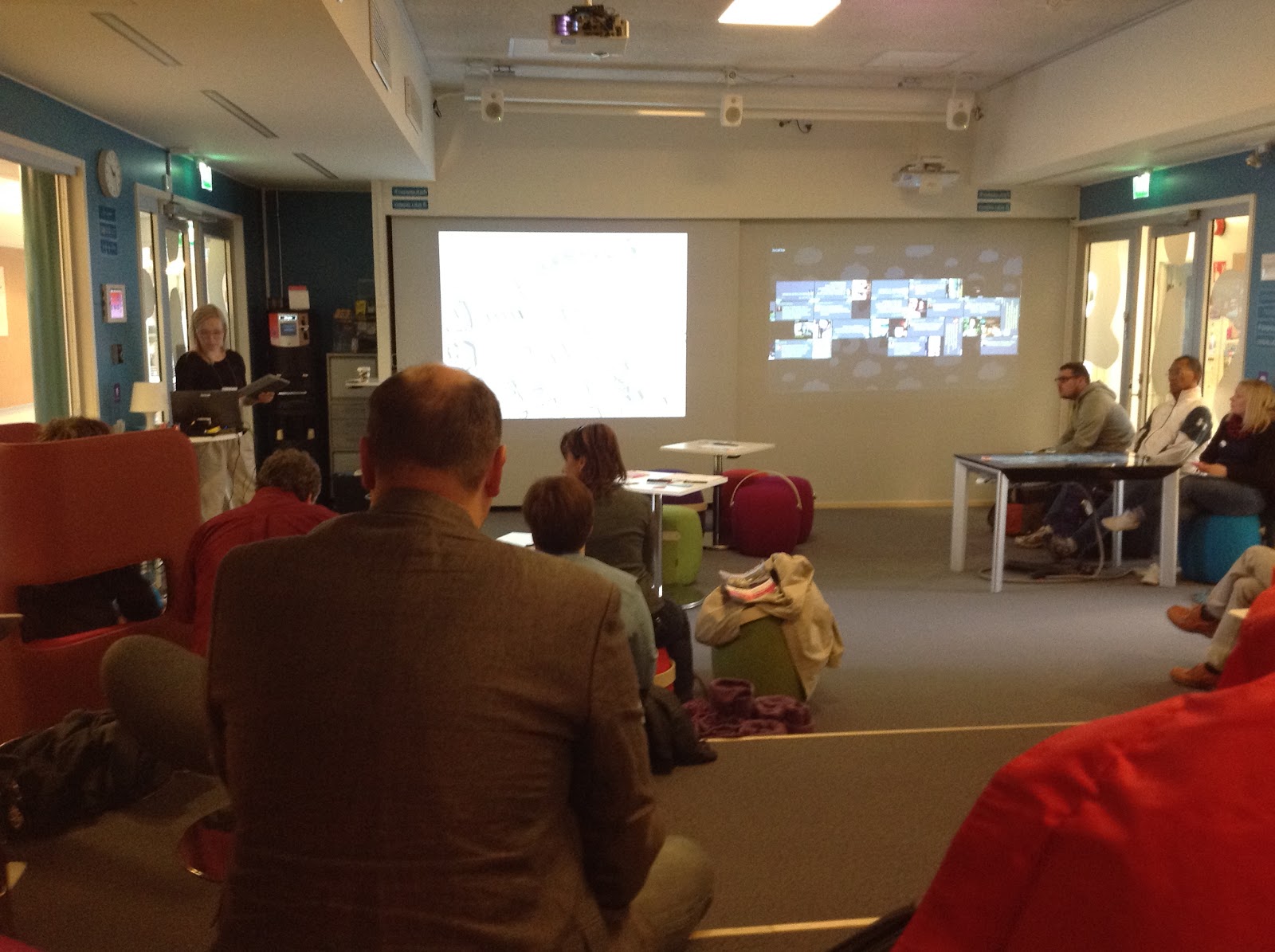
The session at EdMedia highlighted space case studies from five Universities; Bentley University, Tampere University of Technology, Tampere University and Loughborough University. The presentations regarding spaces were really valuable and while I felt more positive about some spaces than others, I found it immensely valid that staff with expertise in learning and teaching were given the space, both metaphorically and physically, to try out different configurations with the aim of enhancing learning and teaching at their universities.
We spend a lot of time telling our students to explore their creative sides, experiment with their work, approach things from a different angle. Shouldn’t we also do the same when it comes to teaching and learning environments?

The next session of the day saw a move from physical spaces to digital spaces. Thom Cochrane’s presentation “Mobile Social Media As a Catalyst for Pedagogical Change” was one of a few sessions that demonstrated examples of digital projects happening at AUT University.
Thom’s session thoughtfully explored learning with mobile devices, as with other forms of digitally enhanced learning it’s not just about the content delivery, technology has to be appropriate. Technologies of this kind inspire different styles of learning, as educators we should embrace these opportunities, especially if they encourage active participation from students and their devices. As with previous presentations, having the opportunity to explore and trial new styles of delivery and technical integrations has been imperative in enhancing student experience. Having the space to trial and explore is so important particularly in times of rapid technical advancement.
The afternoon saw Jarno Tolonen and myself present our session titled “Empowering the Learning Event: New Roles for Learning and Teaching”. We made a purposeful decision to involve the audience as part of our presentation; seemed only right given the nature of our paper. Challenging the roles of instructors and learners is something which needs to be confronted in a world where knowledge can be acquired digitally. As part of our session we challenged delegates who attended, asking them what it means to be a teacher in today’s connected society. Needless to say there were some very opposing views held within the room, it was great to see so many professionals approach the discussion in a passionate and engaging way. As part of the conference I hadn’t seen many presentations which had incorporated the delegates in attendance, with so much experience and educational expertise available it seemed an opportunity not to be overlooked. This approach definitely worked to our advantage, the room was full and we ended up being the only presentation in the session, meaning our original 15 minute allocated slot had been unexpectedly extended to an hour.
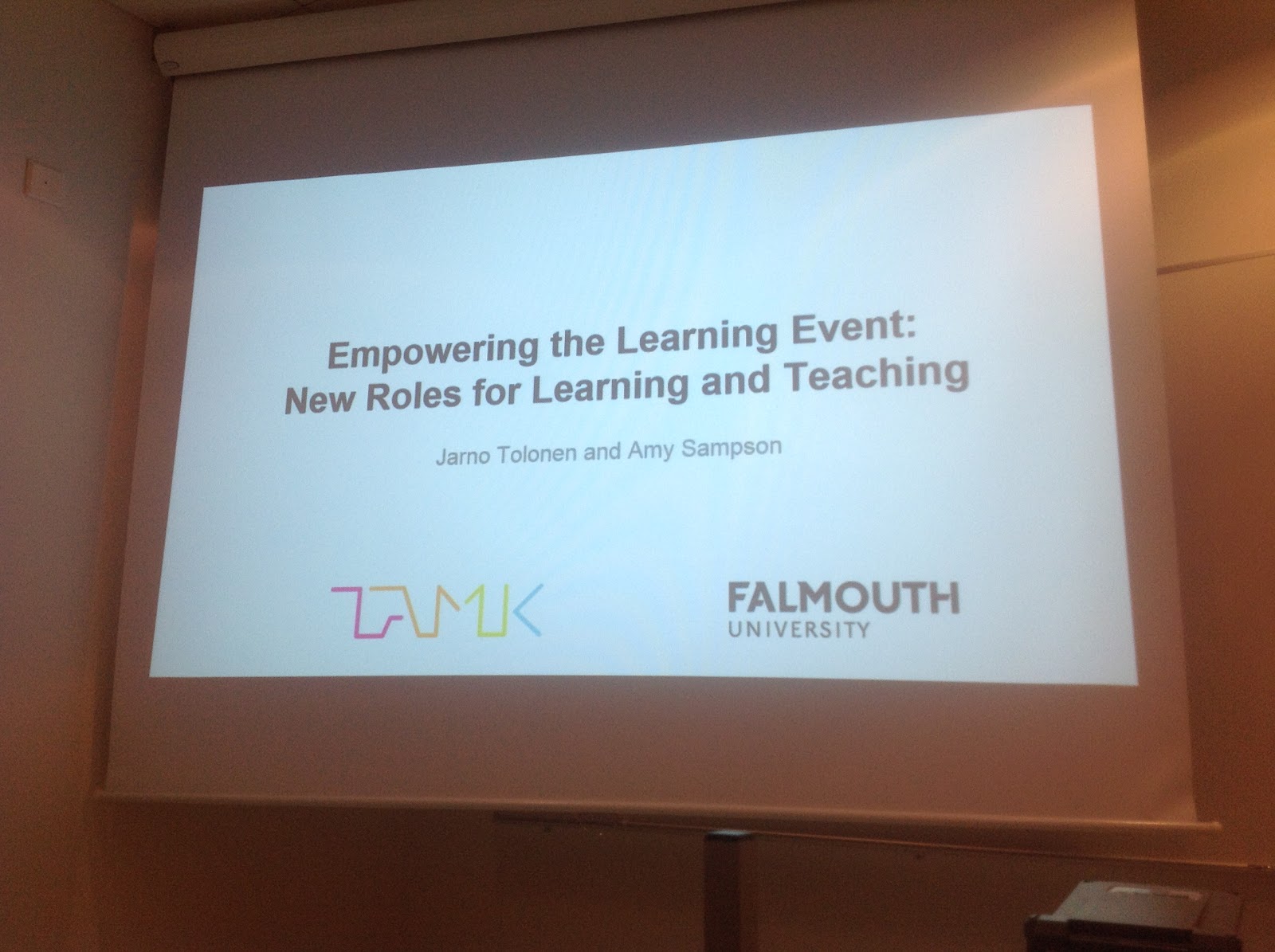
We chatted to delegates after the session and received positive feedback from those attending. As a result we have decided to keep investigating new roles for learning in teaching, we’re also hoping to incorporate some of the common themes which arose as part of the conference. Our partnership with TAMK has developed over the years and its really positive that we’re going to be working together in the future.
The themes from this years conference were so relevant and timely given current advancements in education, it was a great opportunity to be involved with the event and contribute some ideas from a educational technology perspective. Finland as ever was a beautiful place to visit and I’ve come away with a renewed energy to push for more appropriate spaces for teaching and learning. Our partnership with TAMK has also strengthened and we look forward to further projects in the future.
Sahlberg, P. 2007. Education policies for raising student learning: The Finnish approach. Journal of Education Policy, 22(2), 173-197.
by digilearn | Sep 10, 2014 | General
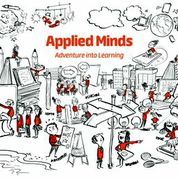
As the weather seems to be taking on a distinctly autumnal feel and we prepare for the start of term there is opportunity to reflect on an event I attended in the summer. One of these was the ’Applied Minds – Looking to the future’ workshop, hosted by Mounts Bay School in the lovely settings of Tregenna Castle. The Applied Minds workshop provided ET with an opportunity to engage with teachers, from local primary and secondary schools who were meeting to share best practice and discuss the future of education.
I hosted two 20 minute round table discussions on the topic of games based learning (GBL) each of which started with an introduction to games based learning. Participants were particularly interested in successful examples of games being used for learning elsewhere, a couple of those that we looked at were:
Savannah
A location based game simulating lion behaviour. Designed by Futurelab with the BBC National History Unit it enabled young children to role play the life of lions – players work together to carry out a series of ‘Lion Missions’ (such as marking territory, hiding cubs and hunting)
and
Guitar Hero
An East Lothian secondary school used Guitar hero for a whole term using the game as a basis for a personal research project on a rock star; a starting point for discussion regarding cultural and economic factors in different countries; to consider instruments used in different religions; looking at design and marketing merchandise; to build on geography lessons (planning tour etc).
What followed were some really interesting conversations about how games can be incorporated into teaching, with some participants already having experience of this. There were many perceived benefits expressed by the teachers using GBL, the two most common being increasing pupil motivation and being able to allow students (or players) to draw upon and develop a wide range of skills. We over-ran our 20 minute slot on both occasions, often drawing the interest of other workshop delegates passing by. It’s safe to say the enthusiasm for GBL is healthy, and given the time and resources we will see GBL increasingly present in mainstream education.
by digilearn | Sep 4, 2014 | General
After a short period of downtime (its first since going live), the Learning Space has now been migrated to its new location – a more robust server environment. You won’t notice any visible difference in the way the service operates, other than an increase in speed during periods of heavy use.

Can we take this opportunity to thank you kindly for your patience!
by digilearn | Aug 13, 2014 | General
On Wednesday 3rd September 2014, FX Plus IT Services will be updating the infrastructure behind Learning Space. This will ensure that the service will have greater support and resiliance in the future.
What this means for you?
Educational Technology have been working with ITS to ensure that through this transition the current issue of large file uploading/downloading has been resolved.
The Educational Technology team will be able to dedicate more time and resources to supporting you in your teaching and learning environments, not just in use of the VLE but in any aspect of enhancing learning through technology.




